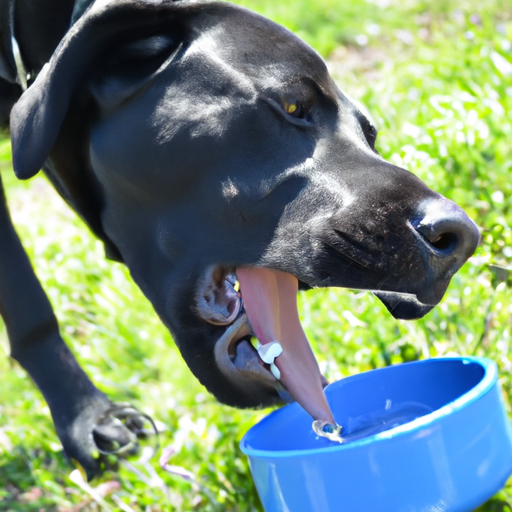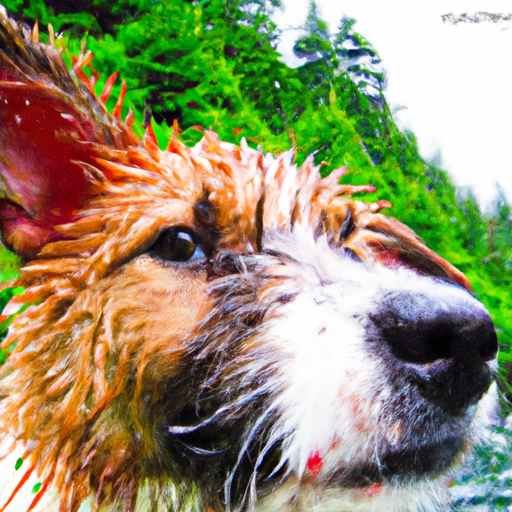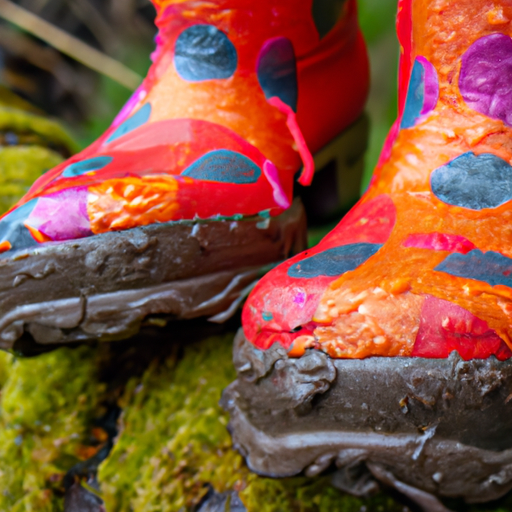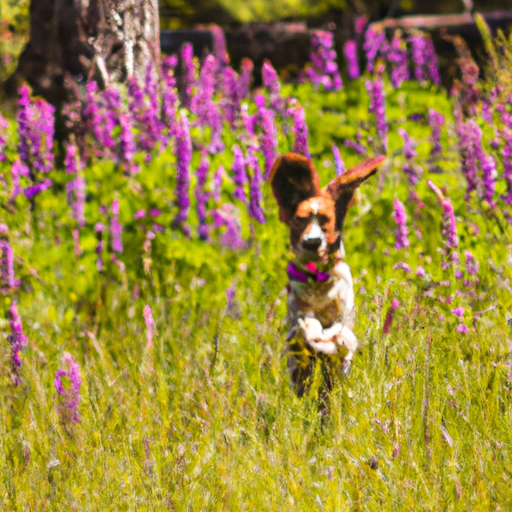As a responsible dog owner, it is crucial to prioritize your furry friend's well-being, especially during the hot summer months. Keeping your canine companion safe from the dangers of heatstroke is essential. In this article, you will discover valuable tips and advice on how to prevent canine heatstroke, ensuring your dog stays happy, healthy, and cool all season long. From recognizing early warning signs to providing adequate shade and hydration, these important tips will help you make informed decisions while keeping your four-legged friend safe from the heat's harmful effects.
Understanding Canine Heatstroke
Definition of canine heatstroke
Canine heatstroke, also known as hyperthermia, occurs when a dog's body temperature rises to dangerous levels and cannot regulate it effectively. A dog's normal body temperature is around 101 to 102.5 degrees Fahrenheit (38.3 to 39.2 degrees Celsius), and any temperature above 104 degrees Fahrenheit (40 degrees Celsius) is considered abnormal. Heatstroke is a life-threatening condition that can lead to organ damage, brain dysfunction, and even death if not treated promptly.
Causes of canine heatstroke
Several factors can contribute to canine heatstroke. The primary cause is prolonged exposure to high temperatures and excessive heat. This can happen when a dog is left outside without shade or proper ventilation. Other potential causes include vigorous exercise in hot weather, leaving a dog in a parked car, walking on hot surfaces, and even certain medical conditions that affect a dog's ability to regulate its body temperature.
Symptoms of canine heatstroke
Recognizing the symptoms of heatstroke is crucial in providing immediate care for your dog. Some common signs of canine heatstroke include:
- Excessive panting and drooling
- Rapid heartbeat and breathing
- Weakness or collapse
- Vomiting or diarrhea
- Seizures or unconsciousness
If you observe these symptoms in your dog, it is important to act quickly and seek veterinary attention as soon as possible to prevent further complications.
Preventing Canine Heatstroke
Taking proactive measures to prevent canine heatstroke is essential for the well-being of your furry friend. Here are some effective strategies to keep your dog cool and safe:
Keep your dog hydrated
Proper hydration is vital in preventing heatstroke. Always provide fresh, clean water for your dog to drink throughout the day. Ensure water bowls are regularly refilled and easily accessible to your pet. If you're spending time outdoors, bring water with you and offer it to your dog frequently.
Avoid excessive exercise in hot weather
When it's scorching outside, it's best to limit your dog's physical activity. Avoid rigorous exercise during the hottest parts of the day and instead opt for shorter walks or play sessions in the early morning or late evening when temperatures are cooler. Monitor your dog for signs of fatigue or overheating during exercise and take breaks as needed.
Provide shade and cool areas
Creating shaded areas is crucial for preventing heatstroke in dogs. If your dog spends time outdoors, ensure there are shaded spots where they can seek refuge from the sun. Consider using umbrellas, canopies, or natural shade provided by trees. Indoors, designate a cool area for your dog with proper air circulation and a comfortable resting spot.
Never leave your dog in a parked car
Leaving a dog in a parked car, even for a few minutes, can be extremely dangerous and potentially fatal. The inside temperature of a parked car can rise rapidly, reaching deadly levels even on relatively mild days. Always take your dog with you or leave them at home if it's not possible to bring them along. Also, remember to keep your car keys out of reach to prevent accidental confinement in a hot car.
Avoid hot surfaces
Walking your dog on hot surfaces such as asphalt or concrete can cause burns and contribute to heatstroke. Before taking a walk, test the surface temperature with your hand. If it feels too hot for you to comfortably place the back of your hand on it, it's too hot for your dog's sensitive paw pads. Opt instead for grassy or shaded areas, and consider using dog booties for extra protection.
Use cooling products
There are various products available that can help keep your dog cool during hot weather. Cooling towels or bandanas can be soaked in water and wrapped around your dog's neck or body. Provide a shallow pool of water for your dog to play and cool off in. Some pet owners also set up misting systems in their yards to create a refreshing environment. Additionally, cooling vests or jackets can provide additional relief from the heat.
Recognize the signs of heatstroke
Being able to recognize the signs of heatstroke in your dog is crucial for timely intervention. Familiarize yourself with the symptoms mentioned earlier so that you can take immediate action if your dog shows any signs of heat-related distress.
Know your dog's breed susceptibility
Some dog breeds are more prone to heatstroke than others. Brachycephalic breeds, such as Bulldogs and Pugs, are particularly susceptible due to their short snouts, which can hinder their ability to cool themselves efficiently. Additionally, dogs with thick coats or underlying medical conditions may be more vulnerable. Understanding your dog's breed susceptibility can help you take extra precautions in preventing heatstroke.
Consult your veterinarian
If you have concerns about your dog's ability to tolerate heat or have any questions related to heatstroke prevention, it's essential to consult your veterinarian. They can provide personalized advice based on your dog's health, breed, and specific needs.
Consider alternative activities
During hot weather, it's wise to explore alternative activities that can keep your dog entertained without exposing them to excessive heat. Indoor play sessions, mental stimulation, and training exercises can help keep your dog active and engaged while staying cool. Water activities, such as swimming or playing in a kiddie pool, are also excellent ways to beat the heat. Additionally, consider attending dog-friendly events or visiting shade-filled hiking trails during cooler times of the day.
Keeping Your Dog Hydrated
Always have fresh water available
To prevent canine heatstroke, it's essential to ensure your dog has access to fresh water at all times. Keep multiple water bowls around your house, especially in areas your dog frequents. Regularly check and refill the water bowls throughout the day to ensure your dog always has access to adequate hydration.
Encourage your dog to drink
Some dogs may need a little encouragement to drink water regularly. If your dog is not drinking enough, try enticing them with flavored water or adding a small amount of low-sodium broth to make it more appealing. Monitor your dog's water intake to ensure they are staying properly hydrated.
Use ice cubes or frozen treats
On particularly hot days, you can provide your dog with ice cubes or frozen treats to help keep them cool and hydrated. You can freeze dog-friendly broth, low-sodium chicken stock, or even pureed fruit to create tasty and refreshing treats. Just make sure to use safe ingredients for dogs and avoid any potential choking hazards.
Consider a pet water fountain
Some dogs are more enticed to drink from running water sources, such as taps or fountains. Consider investing in a pet water fountain, which constantly circulates and filters the water, making it more appealing to your dog. This can be particularly useful for dogs who are picky drinkers or require some extra motivation to stay hydrated.
Avoiding Excessive Exercise in Hot Weather
Exercise during cooler times of the day
To prevent heatstroke, it's crucial to adjust your dog's exercise routine to suit the weather conditions. Opt for early morning or late evening walks when temperatures are lower. These times of day offer cooler air and reduced risk of overheating, allowing your dog to engage in physical activity without putting themselves at risk.
Take breaks during exercise
During hot weather, it's essential to take regular breaks during exercise sessions with your dog. Find shaded spots to rest and cool down. Allow your dog to relax and catch their breath before continuing with any physical activity.
Avoid strenuous activities
Strenuous activities, such as long-distance running or intense play sessions, can put your dog at a higher risk of heatstroke. Instead, focus on moderate exercise that doesn't push your dog to their limits. Prioritize supervised play and engage in activities that allow your dog to cool down and rest as needed.
Monitor your dog's breathing and behavior
Keep a close eye on your dog's breathing and behavior during exercise. If you notice excessive panting, drooling, or signs of fatigue, it's important to intervene and provide your dog with a chance to cool down. If your dog seems overly stressed or shows signs of discomfort, it's best to stop the activity and find a cooler, shaded area for them to rest.
Providing Shade and Cool Areas
Shade your outdoor areas
When creating an outdoor space for your dog, ensure there are ample shaded areas for them to seek refuge from the sun. Use umbrellas, canopies, or natural shade provided by trees to create cool spots. Position your dog's bed, crate, or resting area in shaded areas whenever possible to keep them comfortable.
Create a cool spot indoors
If your dog spends time indoors, offer them a designated cool spot. Choose an area with proper air circulation and away from direct sunlight. Elevated beds or cooling mats can also provide additional comfort by allowing air to circulate underneath your dog. Consider using fans or air conditioning to maintain a cooler indoor environment.
Use cooling mats or vests
Cooling mats are specifically designed to lower a dog's body temperature and provide relief from heat. These mats can be placed indoors or outdoors and often contain gel or cooling properties that activate upon contact with your dog's body. Cooling vests or jackets can also be worn by your dog during walks or outdoor activities to help regulate their body temperature.
Allow access to air-conditioned areas
If you have air conditioning in your home or space where your dog spends time, make sure they have access to those areas during hot weather. Air conditioning provides a controlled and comfortable environment that can help prevent heatstroke. It's important to ensure that these areas are safe for your dog, free from potential hazards, and offer proper ventilation.
Never Leaving Your Dog in a Parked Car
Understand the dangers of a hot car
Leaving a dog in a parked car, even for a short time, can be extremely dangerous and potentially fatal. The temperature inside a parked car can rise rapidly, even with the windows cracked, creating a life-threatening situation for your dog. Dogs are particularly vulnerable to heatstroke due to their limited ability to cool themselves compared to humans.
Cracking windows is not sufficient
It is a common misconception that cracking the windows of a parked car can provide enough ventilation. However, this is not sufficient to regulate the temperature inside the vehicle. The temperature inside a car can increase by more than 20 degrees Fahrenheit (11 degrees Celsius) within just 10 minutes, regardless of cracked windows. Leaving your dog alone in a car, even for a few minutes, puts them at serious risk of heatstroke.
Leave your dog at home if necessary
To ensure your dog's safety, it's best to leave them at home if you cannot bring them with you to a destination that allows them inside. Never leave your dog unattended in a vehicle, even for a short period, regardless of whether it's running or the air conditioning is on. It's always better to prioritize your dog's well-being and find alternative solutions such as dog sitters or daycare for when you are away.
Keep your car keys out of reach
Accidental confinement in a hot car can have devastating consequences. To prevent any mishaps, keep your car keys out of reach of your dog. Dogs are curious creatures and may accidentally lock themselves inside a car, exposing themselves to extreme temperatures. By keeping your car keys secure, you can minimize the risk of your dog being trapped in a dangerous situation.
Avoiding Hot Surfaces
Test surfaces with your hand
Before walking your dog on surfaces such as asphalt or concrete, it's essential to test their temperature with your hand. If the surface feels too hot for you to comfortably place the back of your hand on it for several seconds, it's likely too hot for your dog's sensitive paw pads. Opt for grassy areas, shaded paths, or walk your dog during cooler times of the day to avoid potential burns or discomfort.
Walk your dog on grass or shaded areas
Whenever possible, choose grassy or shaded areas for your dog's walks. Grass provides a natural and cooler surface for them to walk on. Shaded areas minimize the risk of overheating from direct sun exposure. While walking on grass and shaded areas is generally safer, it's still important to monitor your dog's behavior and any signs of discomfort during the walk.
Use dog booties for extra protection
If you frequently walk your dog on hot surfaces or live in an area with high temperatures, consider using dog booties for added protection. Dog booties provide a barrier between your dog's paw pads and the hot ground, reducing the risk of burns. However, it's important to properly introduce your dog to booties and ensure they fit well, allowing for comfortable movement.
Using Cooling Products
Use cooling towels or bandanas
Cooling towels or bandanas can provide instant relief for your dog during hot weather. These products are typically made of breathable fabric that can be soaked in water and wrapped around your dog's neck or body. The evaporative cooling effect helps lower your dog's body temperature, providing comfort and reducing the risk of heatstroke.
Provide a shallow pool for your dog
If your dog enjoys water, setting up a shallow pool can be a fantastic way to keep them cool. Fill the pool with cool (but not icy) water and supervise your dog while they play. Ensure the pool is shallow enough for your dog to safely enter and exit, and never leave your dog unattended near water.
Set up a misting system in your yard
Creating a misting system in your yard can provide a refreshing and cool environment for your dog. Misting systems spray a fine mist of water into the air, creating a cooling effect when it comes into contact with the skin. This can be particularly beneficial in dry and arid climates where the ambient temperature is consistently high.
Consider a cooling vest or jacket
Cooling vests or jackets are specially designed to keep your dog cool during hot weather. These garments typically incorporate cooling properties, such as gel packs or evaporative cooling materials, that activate when dampened or frozen. Cooling vests or jackets can be worn by your dog during walks, hikes, or any outdoor activity, helping to regulate their body temperature and reduce the risk of heatstroke.
Recognizing the Signs of Heatstroke
Excessive panting and drooling
One of the earliest signs of heatstroke is excessive panting and drooling. Heat causes dogs to try and regulate their body temperature through panting, which helps dissipate heat. If your dog is panting heavily and excessively drooling, it may be a sign that their body is struggling to cool down effectively.
Rapid heartbeat and breathing
Heatstroke can cause an increase in heart rate and respiratory rate, leading to a rapid heartbeat and breathing in dogs. Monitor your dog's pulse by placing your hand on their chest, just behind the elbow. If you notice a rapid or irregular heartbeat, it could indicate heatstroke, and immediate action should be taken.
Weakness or collapse
Heatstroke can cause weakness, fatigue, and muscle tremors in dogs. If your dog suddenly appears weak, has difficulty standing, or collapses, it may be experiencing heatstroke. This is a serious symptom that requires immediate medical attention.
Vomiting or diarrhea
Heatstroke can also lead to gastrointestinal distress in dogs. If your dog starts vomiting or having diarrhea, it could be a sign of the body's response to heat stress. These symptoms should not be ignored and should prompt a visit to the veterinarian.
Seizures or unconsciousness
In severe cases, heatstroke can lead to seizures, loss of consciousness, or coma. If your dog experiences any of these symptoms, it is a medical emergency, and you should seek veterinary care immediately.
Considering Alternative Activities
Indoor play or training sessions
When the weather is hot and potentially dangerous for your dog, consider engaging in indoor play or training sessions. Use interactive toys, puzzle games, or practice obedience training to keep your dog mentally stimulated and entertained. Indoor activities provide a safe and controlled environment, minimizing the risk of heatstroke.
Water activities can help cool down
Water activities are great fun for dogs and can also help cool them down during hot weather. If your dog enjoys swimming, find a dog-friendly swimming area or invest in a small kiddie pool where they can splash around. Remember to always supervise your dog and ensure their safety around water.
Explore shade-filled hiking trails
If you enjoy outdoor activities with your dog, consider exploring shade-filled hiking trails during cooler times of the day. Look for trails that have ample tree cover or natural shade to protect your dog from excessive heat. These trails offer a scenic and enjoyable experience while reducing the risk of heatstroke.
Attend dog-friendly events in cooler times
Many dog-friendly events take place during the summer months, but it's important to prioritize your dog's safety. Choose events that occur during cooler times, such as early mornings or evenings, to avoid the hottest part of the day. This allows your dog to socialize and enjoy the event without being exposed to extreme heat.
By understanding the risk factors, recognizing the signs of heatstroke, and implementing preventive measures, you can ensure that your furry friend stays safe and cool during the hot summer months. Remember, prevention is key when it comes to canine heatstroke, so be proactive in providing a comfortable and suitable environment for your dog.






